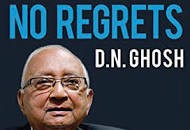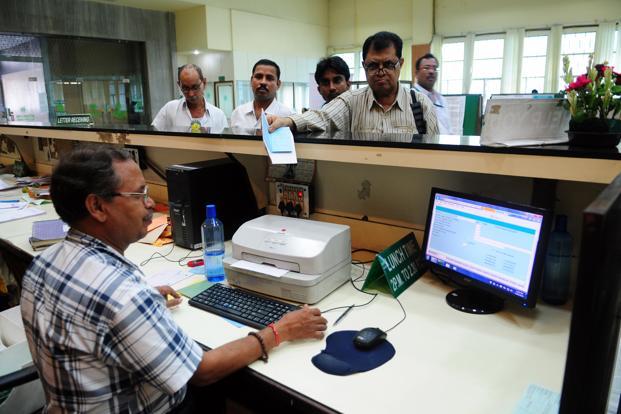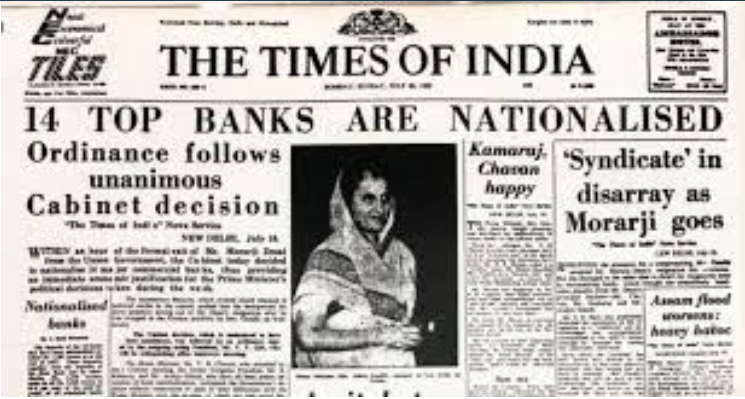D.N. Ghosh, a bureaucrat in the ministry of finance who was associated with many challenging assignments in the financial sector, including heading the State Bank of India (SBI), passed away today. I have lost one of my Gurus who handheld me in my journey as a financial sector reporter/commentator/author.
I was not into business/finance reporting when he was heading SBI (13 May 1985- 12 May 1989). I got to know him closely much later, in the last decade. He had explained many nuances of banking over Chinese lunches at the famed Oriental Room of The Bengal Club in Kolkata. He also launched a few of my books in Kolkata.
Deep knowledge and experience in handling varied assignments in the financial sector apart, he had a child’s curiosity about everything. Not too many nonagenarians are as tech-savvy as Ghosh was. Once I made the mistake of explaining to him how to join a book launch event as a special guest on zoom! He curtly told me to refrain from teaching him technology as he had been attending board meetings of companies almost daily on zoom.
He had been active on social media such as Facebook and Twitter (now X) – where he described himself as “Retired civil servant, now enjoying the luxury of nostalgia.” Yes, he was a retired civil servant but never lived in the luxury of nostalgia. He was active and involved in every thing that has been happening around us.
His book No Regrets (Rupa Publications) offers a gripping account and behind-the-scenes story of bank nationalization. It also narrates the tension between Reserve Bank of India (RBI) and the finance ministry over regulations and supervision of banks, the politics of appointments of bank directors, and consolidation in the public sector banking industry.
On the night of 17 July 1969, P.N. Haskar, principal secretary of then prime minister Indira Gandhi, was looking for someone who he could trust and discuss the implications of bank nationalization announced by Gandhi a few days earlier in Bangalore. Then economic affairs secretary I.G. Patel and RBI governor L.K. Jha were ignored and the person chosen for this purpose was a relatively junior bureaucrat, a deputy secretary of the banking division in the ministry of finance — Ghosh.
The plan was to do this by an ordinance in a couple of days as then president of India V.V. Giri was to step down on 20 July.
Incidentally, it was not the first attempt to nationalize India’s banks. There had been a move to nationalize five major banks in 1963 and Ghosh had that draft ordinance in his custody.
Fifteen major banks operating in India then, including the National and Grindlays Bank, had about 85 per cent share of the deposits. The decision was to nationalize all of them barring Grindlays and compensate the private owners following a formula adopted for converting the banks in the erstwhile princely states into subsidiaries of SBI. The amount of compensation for the 14 banks was Rs.87.40 crore.
In Parliament, the plan was passed with a minor change that ensured representation of employees, depositors, and agriculture, exports and small-scale industries on the boards of nationalized banks. Predictably, the move was challenged in the Supreme Court.
The focus of the 34-day trial at the court before a bench of 11 judges was on the definition of banking: Can a bank offer guarantees, safe deposits and businesses such as money transfer beyond taking deposits and giving loans? Those who were opposing nationalization of banks wanted the government to allow the private owners of the banks to keep the non-banking activities with themselves. Had they won the case, the purpose of nationalization would have been defeated. The charters of the three presidency banks—the banks of Bengal, Bombay and Madras—which had outlined the scope of banking beyond taking deposits and giving loans came to the government’s rescue.
After nationalization of the banks, the banking department was created—a perennial source of conflict between RBI and the government. While the central bank felt that overseeing the activities of the commercial banks was its responsibility, the government was of the view that the transfer of the ownership of the banks was not a technicality; it signalled the government’s willingness to take greater responsibility in running them. Ghosh was the first occupant of the new department.
While his colleagues would wonder whether the government could afford to leave everything to RBI, Ghosh seemed to have strong reservations about the central bank’s capability. It was “miles away from revolutionary transformations in banking policy”. As a young and impetuous officer, he had often found RBI’s “extra cautious approach perplexing”, and he “could not figure out why it was so very lenient with recalcitrant banks”.
Political influence on the selection of bank chiefs and board members has been a reality even though former finance minister Y.V. Chavan had been candid in saying, “Why do you want to create a situation where unemployed politicians would knock at my doors for these posts?… Do not allow either politicians or bureaucrats to eye for posts within the nationalized banking sector.”
Ghosh’s book talks about a finance minister who had appointed three directors from Hazaribagh, his constituency. He also wrote how V.N. Kak, better known as Ramji Kak, involved with many organizations promoting tourism in Rajasthan, got into the board of PNB. The bank’s chairman S.C. Trikha’s comment on him was: “Ramji made a distinctive contribution to our board meetings. He taught us the art of serving tea and the graces that should accompany it.”
Large-scale and compulsory mergers of banks started in the early 1960s. Even before that, in the mid-1950s, Bank of Baroda ran the risk of being made a subsidiary of SBI. And, sometime after bank nationalization, a bureaucrat (Nirmal Chandra Sengupta) felt 14 banks were far too many for effective control and they should be consolidated into four—one each in east, west, north and south—managed by joint secretaries.
The idea did not find any takers then. Much later, late last decade the government got ready to bite the bullet, opting for consolidation among public sector banks. Ghosh’s book offers valuable insights into India’s banking sector and the role played by the government and RBI in its evolution.
RIP, DN Sir.



